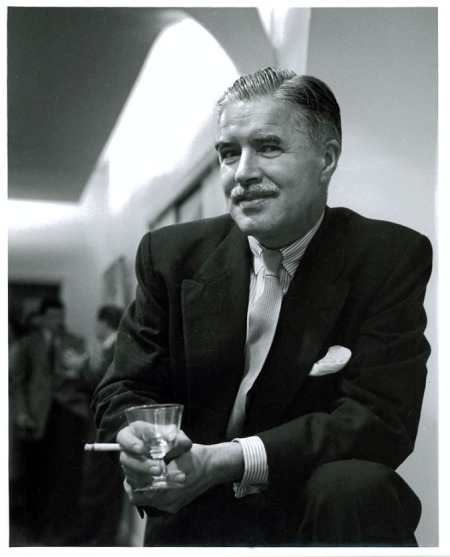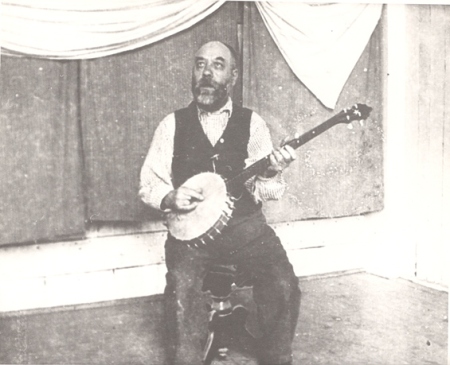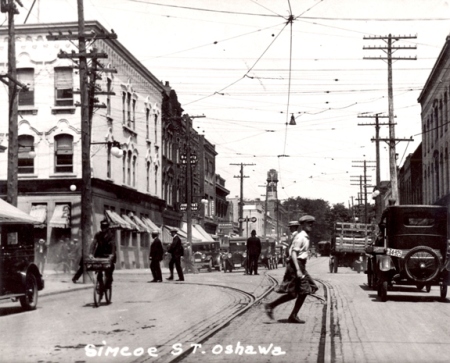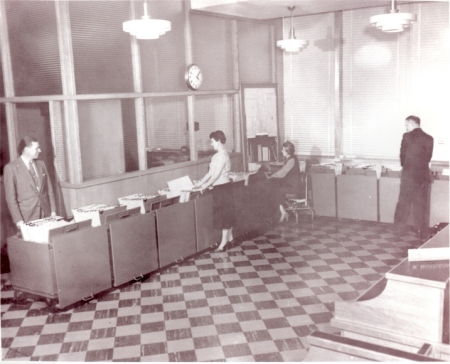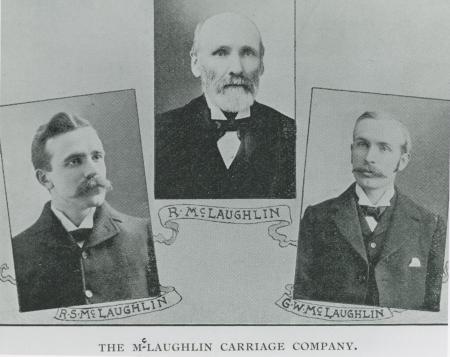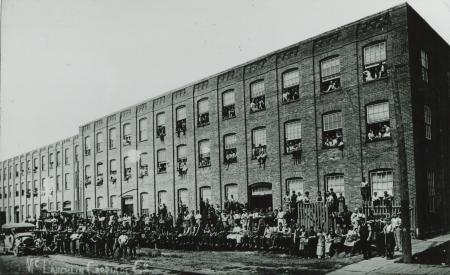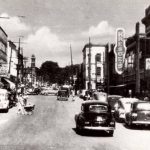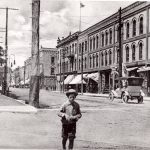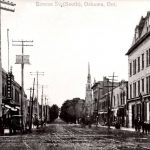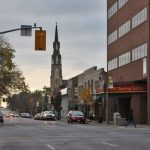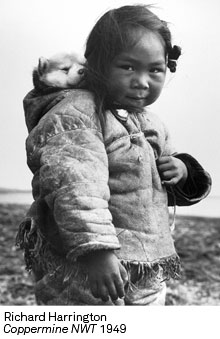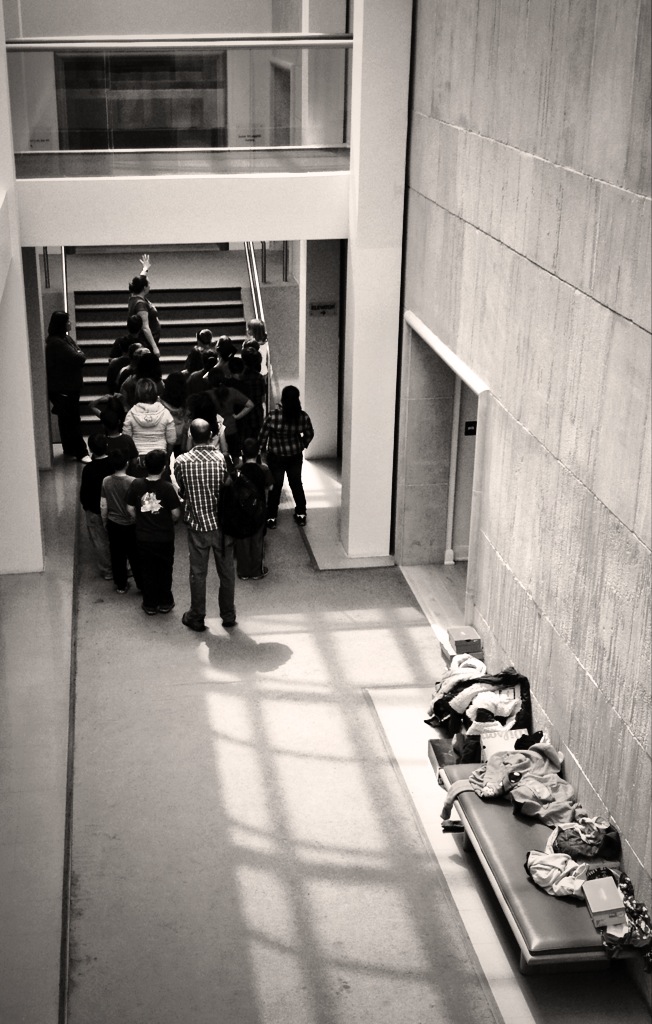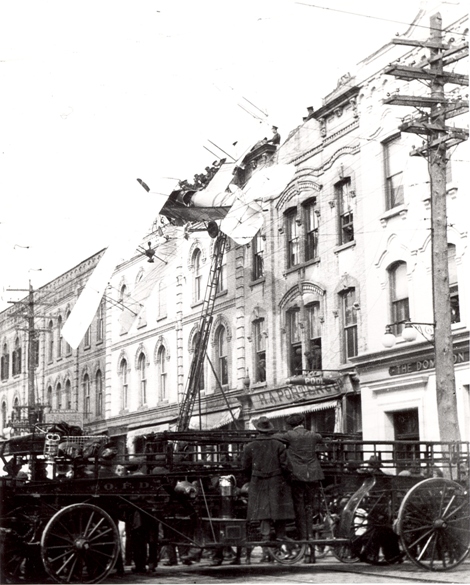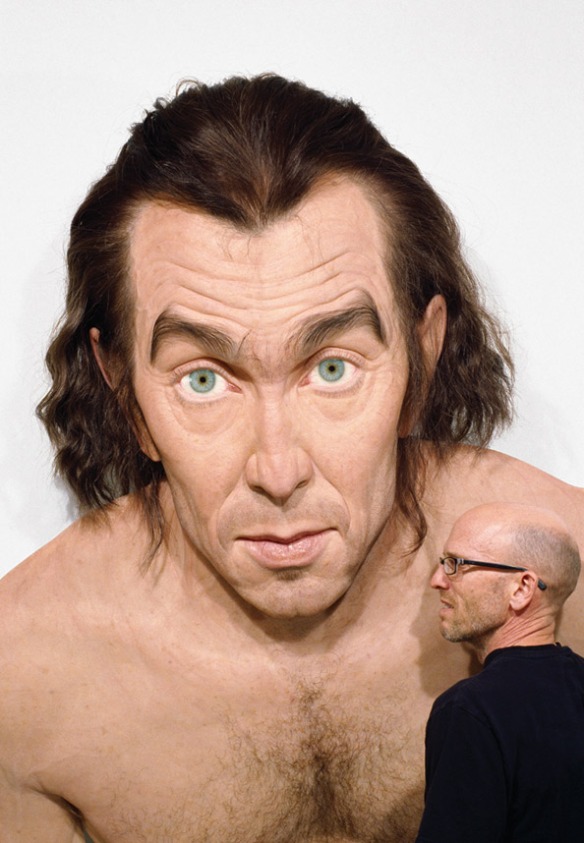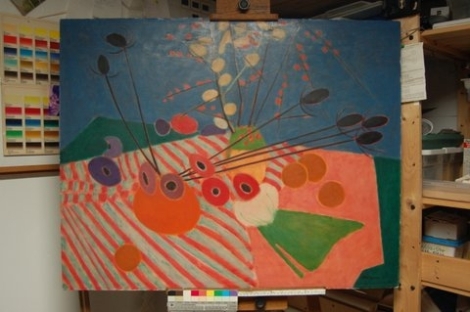This post comes from our Senior Curator, Linda Jansma.
I was going through the lobby of the gallery recently, when a gentleman in the lower Alexandra Luke Gallery caught my eye. “Hmmm, looks like Av Isaacs,” I thought. A quick step closer confirmed that Av was taking a turn around the gallery, something he does two or three times a year.
This was serendipitous. The day before, we had taken delivery of approximately 25 8” x 10” black and white photographs from Pat Feheley. She had inherited them from her father, Budd, who was a co-founder of Park Gallery in Toronto which he opened in the 1950s on Avenue Road. The photographs were taken at an opening of work by Painters Eleven and included candid shots of Jock Macdonald, Hortense Gordon, Ray Mead, Harold Town and Tom Hodgson. But the other people in that crowded room were a mystery.
So I sat with Av for a half hour in the gallery space with that pile of photographs on my lap, one by one passing them on to Av. Av was the owner of Isaacs Gallery, a Toronto institution that he opened in 1955. He represented artists like Michael Snow, Joyce Wieland and Jack Chambers. He reminisced about living below Jock Macdonald in a duplex on 4 Maple Avenue while the latter was teaching at the Ontario College of Art, and his own father’s reaction when he sold a work by William Ronald for the princely sum of $900 (his father was incredulous). He told me of the opening of the RMG-organized exhibition of the work of William Kurelek and the impression the presence of a red-robed bishop had made on him, as well as the after-party at the home of our Director Emerita, Joan Murray, and how the majority of the guests ended up fully clothed in her swimming pool.

Tom Hodgson (left), Jock Macdonald (right) Park Gallery opening, 1958 Photo:
The New Studio Photography
Av was able to identify a number of people in those photographs which will be incredibly helpful as they’re archived into the collection. But the best part was sitting beside a Canadian legend and hearing his stories.
Thanks for dropping by Av.
Interested in learning more? Click here to read about our upcoming Michael J. Kuczer exhibition. Kuczer also lived in Toronto at 4 Maple avenue with Isaacs and Jock Macdonald.
